Exciting Discoveries in Cryptogams by Dr. Jung
In Chile, sandwiched between the Andes Mountains and the Pacific Ocean, lies the Atacama Desert, the driest land on earth. The aridity of the weather on this desert makes it impossible for many habitats to survive. Due to the extreme weather conditions and barren appearance, people tend to compare this land with Mars and NASA even selected this place as a site on Earth for Mars expedition simulations.
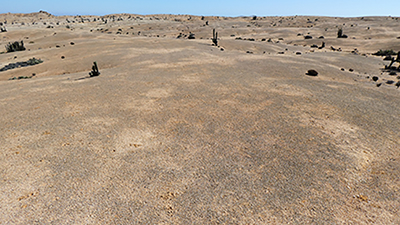
However, in this barely habitable environment, some microbes thrive and might hold the keys to enhanced human adaptability and survival in harsh environments. Dr. Patrick Jung, a postdoctoral researcher in cryptogams, has spent years studying these tiny survivors. He not only studies the organisms that colonize the surfaces of the grits, but his research has also led him to discover a brand new biocenosis that covers this desert. We are excited to share that he is going to publish his results in the next few weeks.
In addition to the new discovery in the Atacama Desert, Dr. Jung also found a new cyanobacterial species with complex life cycles from a small island of the Netherlands. Dr. Jung named it ″rattlesnake″.
We are honored to be able to get hold of Dr. Jung during his busy schedule. We hope his detailed explanations below will shed some light on these tiny and yet very important terrestrial microbes.
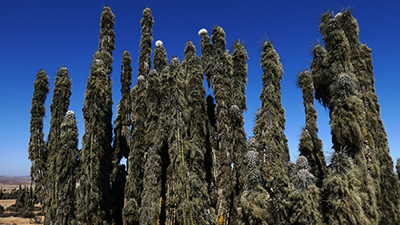
Q: You are a postdoctoral botanist in Germany. Very impressive. Please share with us your area of study and why you chose that field?
A: I′m a postdoctoral researcher working in the field of cryptogams. Cryptogams is a rather old collective term for organisms that were once considered being ′plants′ that have a ′hidden marriage′, that′s what the Greek meaning is. All kinds of green microorganisms, such as algae but also fungi, lichens as a symbiosis of both, mosses, and even ferns were grouped under this term. I′m investigating especially microalgae such as green algae and cyanobacteria (also known as blue-green algae) together with lichens from the most extreme environments on our planet such as the Atacama Desert of Chile. Everyone who knows me from the times when I was a kid will agree that it was quite likely that I would become a botanist or at least something related because I was always into plants and biology. I grew up in the countryside of Germany in a small village with fewer than 350 inhabitants surrounded by pure nature, a place full of things to investigate. During the last years of school, I started to fall in love with passion flowers and a few other plants and decided to study biology in order to understand things literally from their roots. During this lovely time at the university, I met a professor who was just outstanding in the way he understood nature, and I was convinced I had to get into this research even if I had no clue about what he was talking about. As it came to my master thesis I asked him if he had a project and so I got into contact with cyanobacteria and learned a lot from a real epic master in his field. A few months later he noticed that I was on fire like nobody else and he offered me a Ph.D. project, the beginning of my dream. We went together to the Atacama Desert and even discovered a completely novel type of biocenosis there in addition to a lot of other scientific adventures. Now he is retired but we are still in contact very often because our story is not about to end soon.
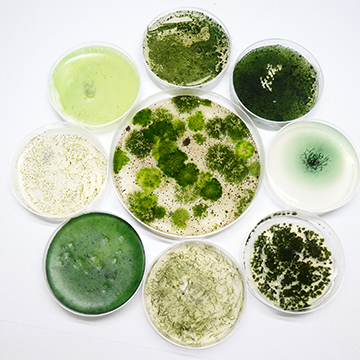
Q: Please give us a roadmap of your research starting from DNA analysis.
A: One focal point of interest in my research is the taxonomy of cyanobacteria. Those organisms have evolved photosynthesis as we know it today and they are responsible for oxygen in our atmosphere which makes them significant organisms that have conquered nearly every habitat on our planet. You can find them forming toxic algal blooms in lakes and the oceans, in desert soils, Antarctica, on walls of houses, tree barks, on and under stones, on artificial surfaces such as glass and also 600m below the soil surface by slightly changing their photosynthetic metabolisms. In one of my studies, I investigated hypolithic biofilms. That′s a greenish layer of microorganisms on the bottom side of translucent stones such as quartz. I collected those stones and scraped off some of this biofilm. Back in the lab, this biofilm is transferred to a specific medium solidified as agar plates. This medium promotes the growth of a selective group of microorganisms such as cyanobacteria. Those algae grow on the plates in a culture room that provides light for their photosynthetic activity and a temperature of around 17°C which suppresses the growth of fungal contamination. After roughly six weeks the plates will be investigated under a binocular stereo microscope and you can discover various green spots of different shapes and shades of green to blue. Those colonies will be picked with a needle and each one gets transferred to a new agar plate on which the colony has to grow again for several weeks. This process is repeated until one agar plate contains only one species of algae, called an isolate, which can take up to one year in some cases. If that′s done I′m using protocols that I developed over the years to extract the DNA of each isolate which will be amplified during a specific molecular technique. This amplified DNA region will then be sequenced by a company providing me with the DNA code of that specific gene region. Those regions contain the information that we need to compare to references from databases in order to narrow the identity of our isolate. Once that is done a plethora of bioinformatic investigation follows combined with microscopic investigations and literature research. In the end, you might have a clue about the identity of that isolate and you can combine it to ecological data from its original environment. One needs to consider that this isolate, this specific species of cyanobacteria, will now be provided to the public via culture collection so that other researchers can use it as well. Such an isolate from the Arctic or deserts can be considered a real survivor; it must have adaptations to survive in a freezing or a highly competitive environment with little water. Maybe it produces toxins that can be used as therapeutics one day or it produces enzymes that can digest plastic. We simply don′t know yet, but now the organism is isolated from the bottom side of a stone of a harsh environment and it will be provided to others.
Q: Is your research involved in field study? If yes, which geolocation do you cover?
A: I′ve worked on soil samples from the Arctic Spitsbergen, Antarctica, the European Alps, sandy beaches of the Netherlands, and various areas across Chile but the main focal point of interest is the coastal areas of the Atacama Desert, Chile. In detail, I′m working in the National Park Pan de Azúcar, a very interesting area that is open for tourism as well. I′m in contact with the ranger of the National Park and we are confident that this research will be an ongoing project.

Q: You have found a new Cyanocohniella species. This is very exciting. Please share with us how you found this organism and the significance of the finding. Why did you name it after rattlesnakes?
A: A few years ago I was invited to an excursion to a small island of the Netherlands and I took some samples from the beach area which was already well known for green microbial mats. Back in the lab, I isolated a strange-looking cyanobacterial species. Whenever I had it on an agar plate it took a few days and it looked as if I had several different species of various morphology. I repeated it over and over again and realized that it was always the same species. The secret was that it had a complex life cycle with various life stages reflected in different morphological stadia that looked very similar to other cyanobacterial species. Complex life cycles are well known among some cyanobacteria but rarely to that extend that one species mimics several other species. That was very interesting and will be a nice thing to uncover in future studies. This species also produces resting cells that are yellowish instead of green-blue that are placed in a row that reminded me of a rattlesnake. That′s why it′s called crotaloides (crotalus is the genus of rattlesnake).
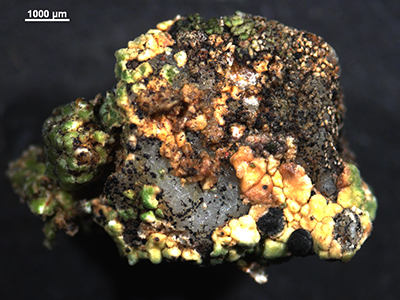
Q: You found girt stones from the Atacama Desert. Please tell us the ecosystem residing in these stones and the significance of it.
A: During our first field trip to the Atacama Desert we noticed that there were blackish spots on the ground of several square meters that could be seen across the landscape. In the beginning, we thought it would be desert varnish, a common phenomenon of manganese deposits. As fog blew along we realized that the blackish color slightly changed and we started to get on our knees to have a closer look through our magnification glasses, a tool every scientist working on cryptogams has with them. We were absolutely shocked as we saw that the substrate of the area, quartz stones of 6 mm diameters, appeared blackish because of lichens, algae, and fungi that colonized their surfaces. In the dry state, such organisms appear blackish due to pigments that protect them from sunlight and UV. This assemblage of organisms not only colonized the surfaces of the quartz grits but also concatenated them slightly in a way a weak crust was formed, known as biological soil crust. We set up our climate stations and conducted some drone flights to analyze the distribution pattern of this blackish grit crust on the landscape level. Back home in the lab, I started with Ecophysiological experiments that showed us that the organisms on the grits are well adapted to short periods of water availability provided by fog. They even require the lowest amount of water to perform optimum photosynthesis known on earth for comparable systems. In between, we know much more about this grit crust but the biggest mystery remains unsolved: we still don′t know why it forms blackish patterns of high colonization rates and right within the next square meter the substrates are whitish due to the low degree of organisms. All we know is that it seems to be far more complex than a simple relation between topography, fog water deposition, wind direction, and colonization. For these reasons we now applied for new funding with an elaborate proposal to untangle the mysteries of this highly sophisticated system, called grit crust. Actually, it′s my biggest wish to get the funding because we discovered this system and I have the fire to go deeper, I want to know more.
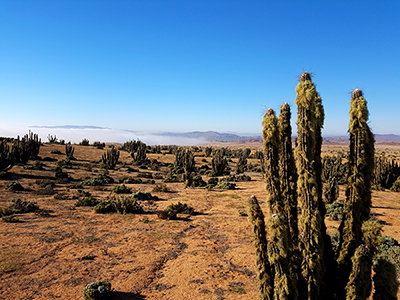
Q: What are the most interesting or unexpected aspects of your research?
A: Initially, I went to the Atacama Desert to investigate how microorganisms can change the earth′s surface with respect to bioweathering processes. What actually happened? We found something completely new, a whole new biocenosis that covers the whole landscape. That′s the biggest wish of any ecologist and it happens very, very rarely. It was by chance and now it became the focal point of my research together with some of my colleagues. Doing research always means being ready for the unexpected and sometimes you just have to walk along that path that just emerged. Maybe it′s the end of a short story, but maybe it will be the path to your new life.
Q: Have you found any alarming factors in your study related to climate change that you don′t mind sharing with us?
A: Climate change is threatening all of us, my research included. I reported the blackish patterns of the grit crust in coastal areas of the Atacama Desert roughly two years ago. In between, colleagues of mine recorded shifts of those patterns. They are now gone from areas that we fully covered two years ago and they are now in areas where they were not visible before. Up to now, we have no clue if this is among the regular and natural base of shifts of the grit crust or if this is due to climate change. At least heavy rainfall events in those areas are happening more frequently and fog intensities are also changing that for sure affects the organisms. Keep your fingers crossed for the funding of our new project and I will be able to tell you more for sure.

Q: For a youngster who is interested in botany, what advice would you give them?
A: Never study something that you are not fully burned for. As a researcher, your subject has to be a part of your personality. Metaphorically speaking you will never be a successful researcher if you only work from Monday to Friday.
Q: Any new research topics that you might get involved in?
A: Currently I′m working a lot on various aspects of cyanobacterial taxonomy that really excites me a lot. I love sitting at the microscope trying to characterize all of those new cultures. During the next few weeks, a new study will be published about a bioweathering scenario provided by the grit crust in the landscape of the coastal Atacama Desert. This article will, for the very first time, elucidate various bioweathering processes from the micro- to the landscape scale that might be at work since geological time scales. I′m very excited to share this with you once the article is published. Besides this, we now also went a step further with our cyanobacterial culture collection because we are doing several screenings for antimicrobial substances right now. Let′s see what comes.
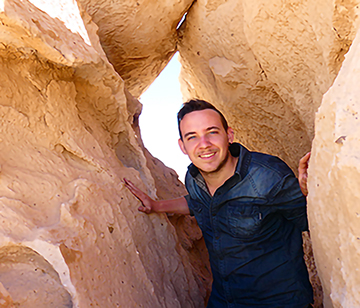
We are thankful for Dr. Jung′s time in explaining his research and new discoveries of the microbes from different regions on Earth. These discoveries are especially important with regard to climate change when adaptability becomes a necessity in an extreme environment.
Dr. Jung′s Instagram
